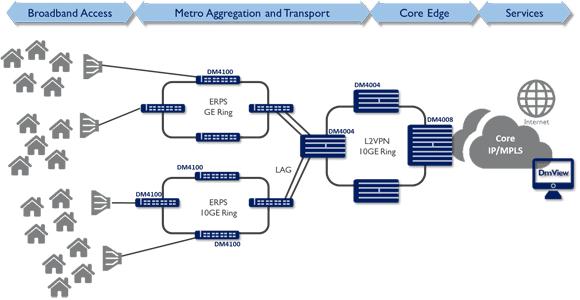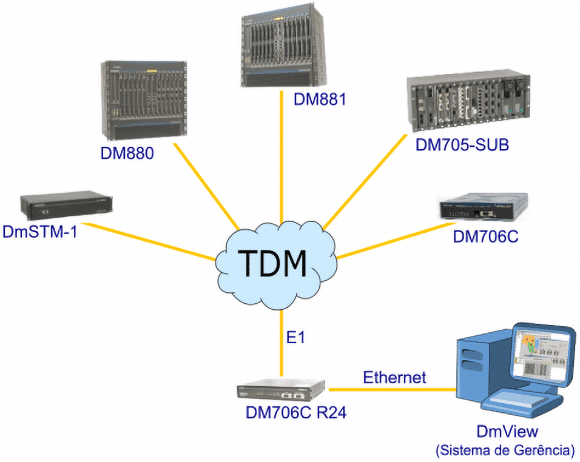DmView is the Integrated Network and Element Management System, made for supervising and configuring Datacom devices, offering status and fail monitoring, configuration, provisioning, audit, performance, security, inventory, network discovery and topological maps.
DmView Maestro is the new Interface, integrating part of DmView, in which the most recent DmView features are available, simplifying and speeding up the operation, since the user just needs to access DmView Maestro using the browser, without installing any software. Among the features already available in DmView Maestro are the CLI templates, which allow to automate and customize mass operations in the network (eg activate services, set up initial infrastructure of the devices), and the complete status and configuration for devices with the DmOS operating system. It is also possible to manage all the network devices and ONUs, in a graphical interface that allows to find the desired elements in a few clicks, among tens of thousands of devices and/or ONUs, and to navigate to the ports, ONUs and configurations. DmView also includes TR-069 management solution (ACS – Auto Configuration Server), which supports Datacom CPEs as well as Multivendor CPEs, and allows to read and configure parameters by CPE, and also execute reboot and firmware/file download for multiple CPEs simultaneously. All DmView Maestro features have detailed auditing: any CLI command, NETCONF configuration or TR-069 parameter sent is audited and can be tracked, as well as all the responses received from the devices.
DmView can be integrated with third-party NMS and OSS/BSS systems, or can operate independently. A wide range of management architectures can be used, from field operation using a notebook to a centralized architecture with redundant application and database servers with high availability, automatic fail-over and load balancing.
Licensing
DmView is available in the following licensing options:
The managed devices referenced above do not include the TR-069 CPEs. DmView Enterprise Lite allows to manage through TR-069 up to 2000 Datacom CPEs and up to 100 Multivendor (non-Datacom) CPEs. It is possible to manage more CPEs through licensing.
The above options do not include the features which require a specific licensing option, which are these:
The following license option, already including the licensable features, is also available:
The Enterprise Lite option is free, and is available for download in the self-service site of Datacom support (request an user access to
the site, if you do not have access yet): https://supportcenter.datacom.com.br.
Requirements
The VM or server on which DmView is installed must have at least:
The following operating systems are homologated in DmView, always in 64 bits:
The supported Oracle versions are (exclusively in non-container mode):
The MongoDB database supported versions are:
The minimal necessary version of Java is:
DmView is deployed in networks with a large amount of devices and several simultaneous users, offering all FCAPS management functionalities (Fault, Configuration, Accounting, Performance and Security). In large service providers it is common to use a separate IP network only for management systems (called DCN - Data Communication Network), but it is also possible to use inband management.
Below can be seen an use case of Carrier Ethernet network management.

DmView uses IP addressing to reach the managed devices. Some remote devices offer the possibility to use proprietary protocols and specific configurations, and can be seen as remotes of the IP addressable devices.
The application below shows a TDM network, using nx64 or nxE1 channels for management.
